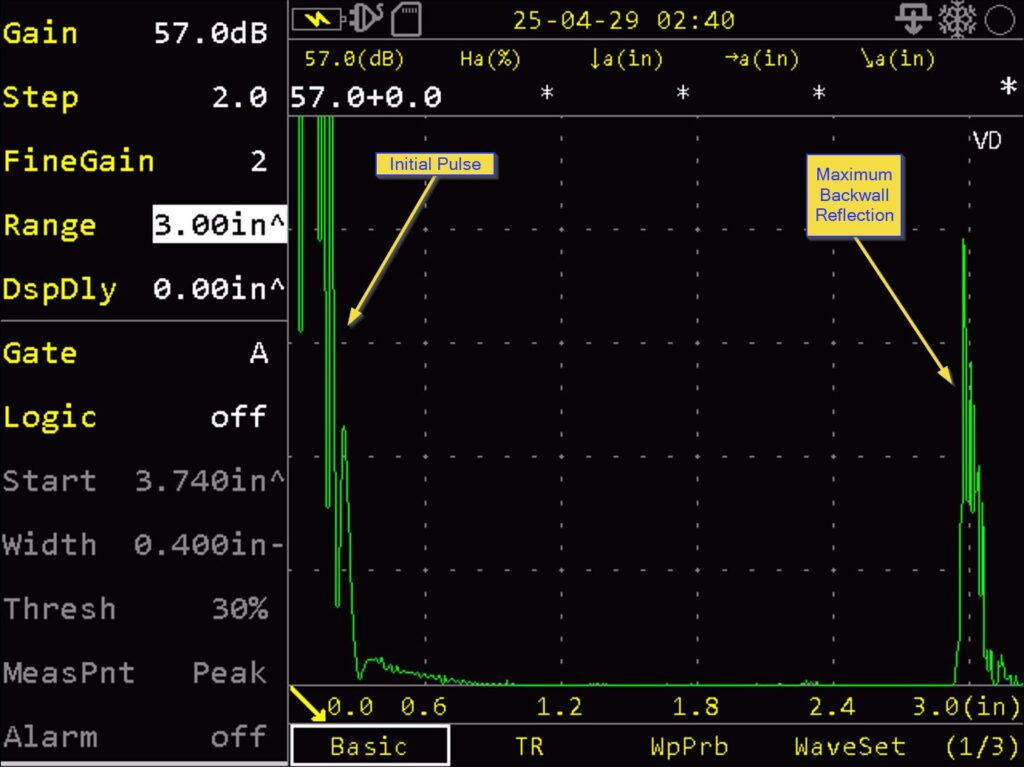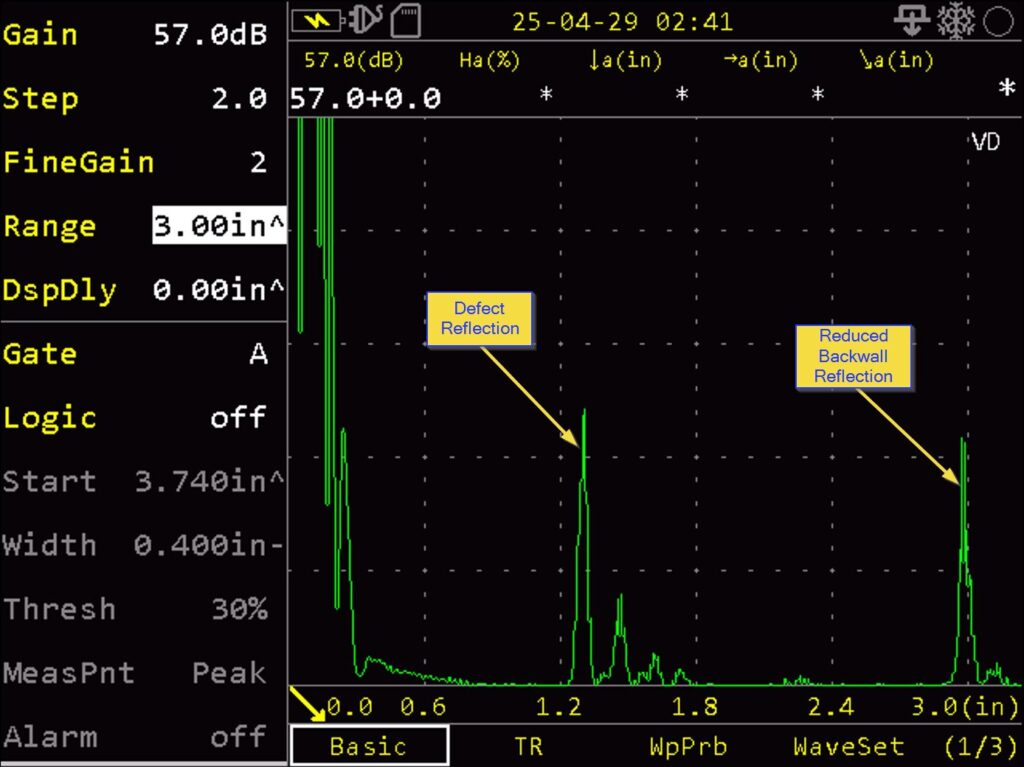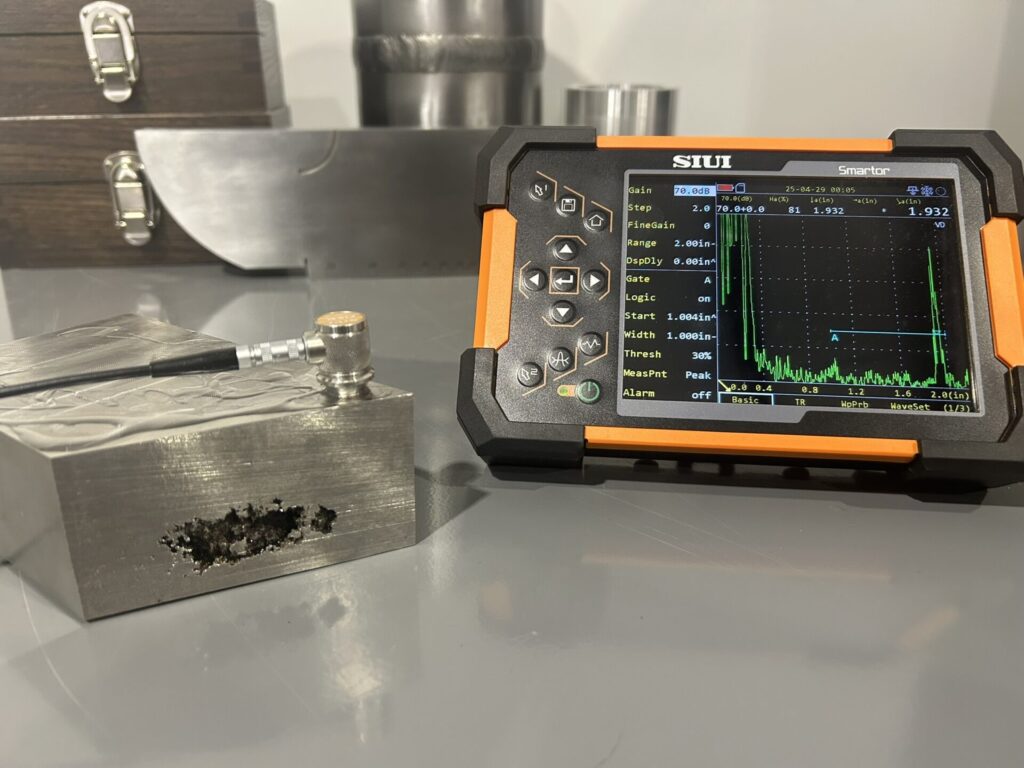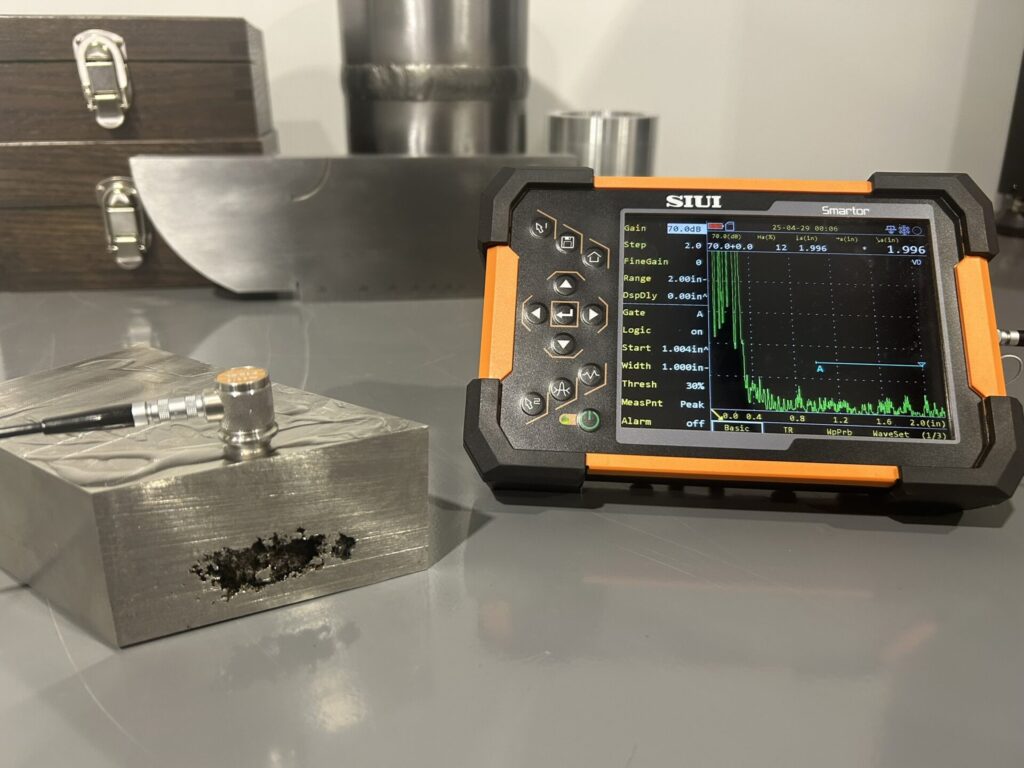In ultrasonic testing, a strong “backwall echo” usually shows up when sound waves travel through solid, defect-free material and bounce off the far side (the back wall).

However, if there’s a defect inside the material, the sound waves might reflect back sooner, creating an indication between the initial pulse and the backwall echo. When this happens, the backwall signal often gets weaker because less sound energy makes it through.

But not all defects reflect sound waves back to the probe. Sometimes, defects are so irregular or large that they scatter and absorb the sound energy, preventing it from returning at all. When this happens, you might not see a clear defect indication — or even a backwall echo.
In this case study, we scanned a machined section of a casting known to have shrinkage cavities. When the probe was placed over a clean, solid area, we saw a strong backwall echo, just as expected.

However, when the probe passed over an area with shrinkage, the backwall echo disappeared completely — and no clear defect signal appeared either. This happened because the large, uneven shrink cavity scattered and absorbed the sound waves, stopping them from returning to the probe.

In ultrasonic testing, it’s not always about the signals you see — sometimes, it’s just as important to understand the signals that are missing.
